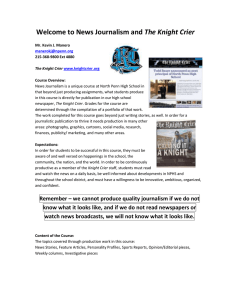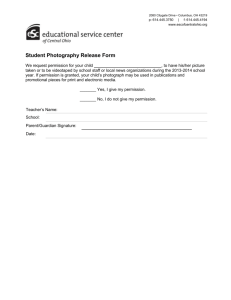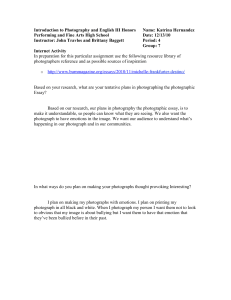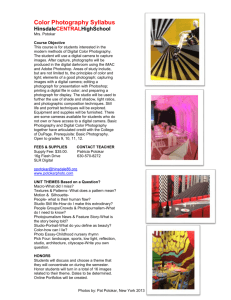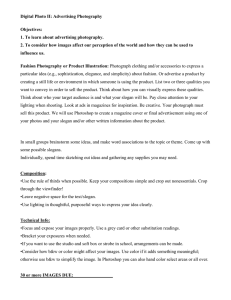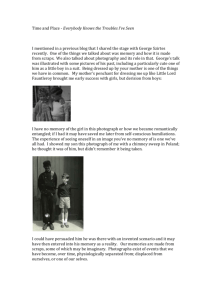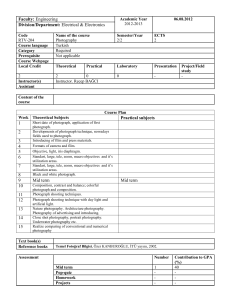Digital Photo 3: Expressions of Time Objectives
advertisement
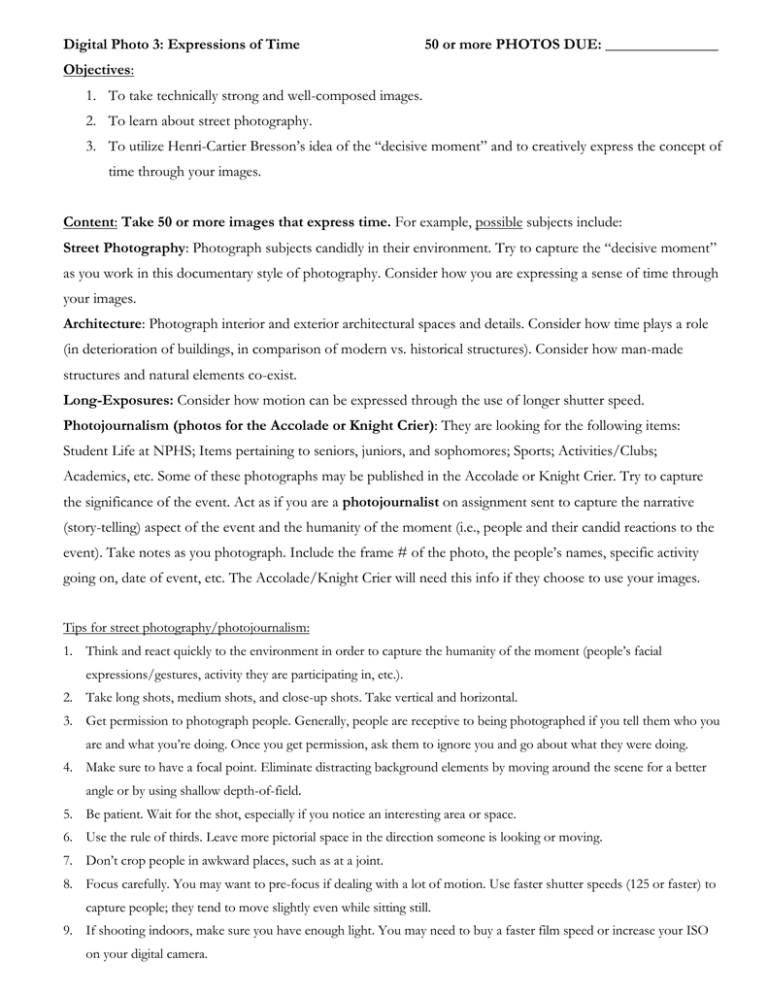
Digital Photo 3: Expressions of Time 50 or more PHOTOS DUE: _______________ Objectives: 1. To take technically strong and well-composed images. 2. To learn about street photography. 3. To utilize Henri-Cartier Bresson’s idea of the “decisive moment” and to creatively express the concept of time through your images. Content: Take 50 or more images that express time. For example, possible subjects include: Street Photography: Photograph subjects candidly in their environment. Try to capture the “decisive moment” as you work in this documentary style of photography. Consider how you are expressing a sense of time through your images. Architecture: Photograph interior and exterior architectural spaces and details. Consider how time plays a role (in deterioration of buildings, in comparison of modern vs. historical structures). Consider how man-made structures and natural elements co-exist. Long-Exposures: Consider how motion can be expressed through the use of longer shutter speed. Photojournalism (photos for the Accolade or Knight Crier): They are looking for the following items: Student Life at NPHS; Items pertaining to seniors, juniors, and sophomores; Sports; Activities/Clubs; Academics, etc. Some of these photographs may be published in the Accolade or Knight Crier. Try to capture the significance of the event. Act as if you are a photojournalist on assignment sent to capture the narrative (story-telling) aspect of the event and the humanity of the moment (i.e., people and their candid reactions to the event). Take notes as you photograph. Include the frame # of the photo, the people’s names, specific activity going on, date of event, etc. The Accolade/Knight Crier will need this info if they choose to use your images. Tips for street photography/photojournalism: 1. Think and react quickly to the environment in order to capture the humanity of the moment (people’s facial expressions/gestures, activity they are participating in, etc.). 2. Take long shots, medium shots, and close-up shots. Take vertical and horizontal. 3. Get permission to photograph people. Generally, people are receptive to being photographed if you tell them who you are and what you’re doing. Once you get permission, ask them to ignore you and go about what they were doing. 4. Make sure to have a focal point. Eliminate distracting background elements by moving around the scene for a better angle or by using shallow depth-of-field. 5. Be patient. Wait for the shot, especially if you notice an interesting area or space. 6. Use the rule of thirds. Leave more pictorial space in the direction someone is looking or moving. 7. Don’t crop people in awkward places, such as at a joint. 8. Focus carefully. You may want to pre-focus if dealing with a lot of motion. Use faster shutter speeds (125 or faster) to capture people; they tend to move slightly even while sitting still. 9. If shooting indoors, make sure you have enough light. You may need to buy a faster film speed or increase your ISO on your digital camera.


